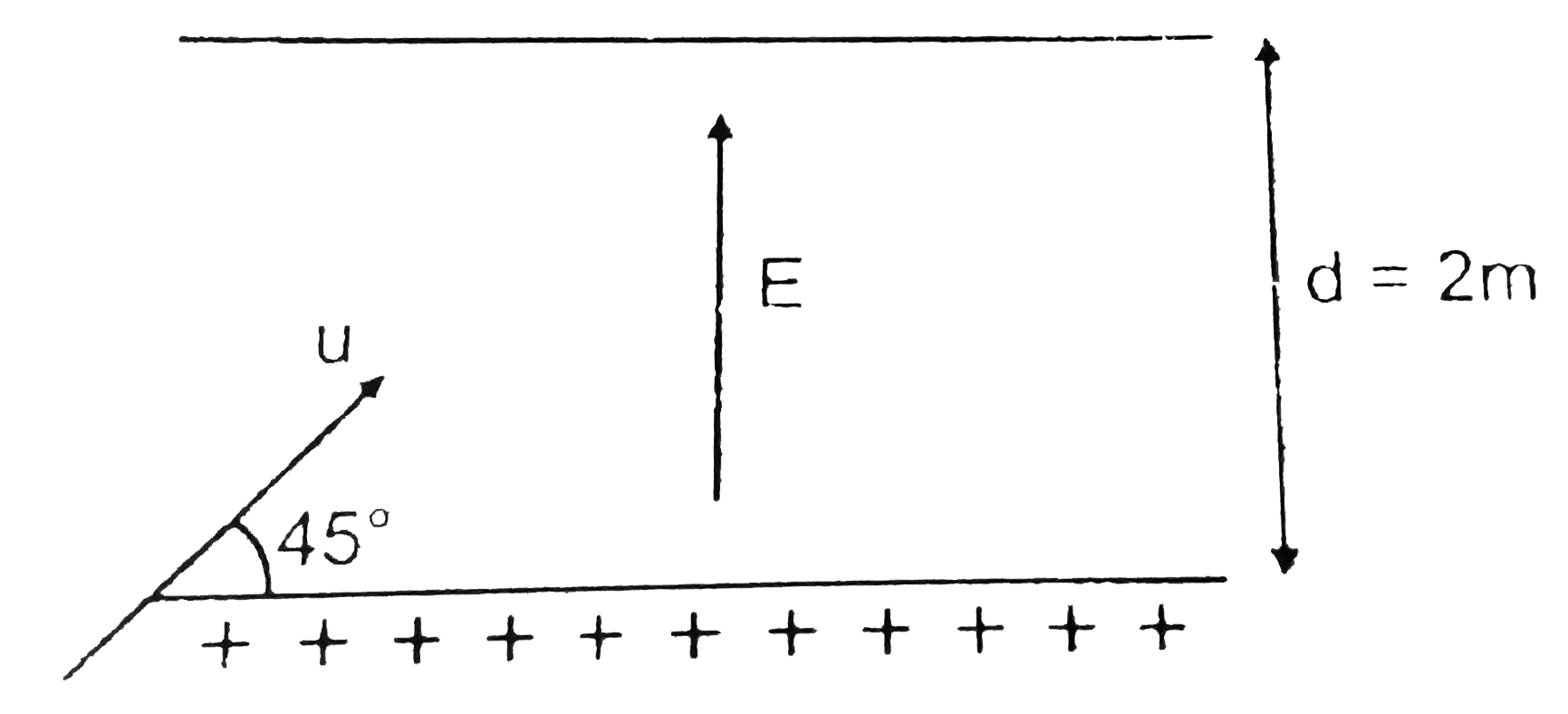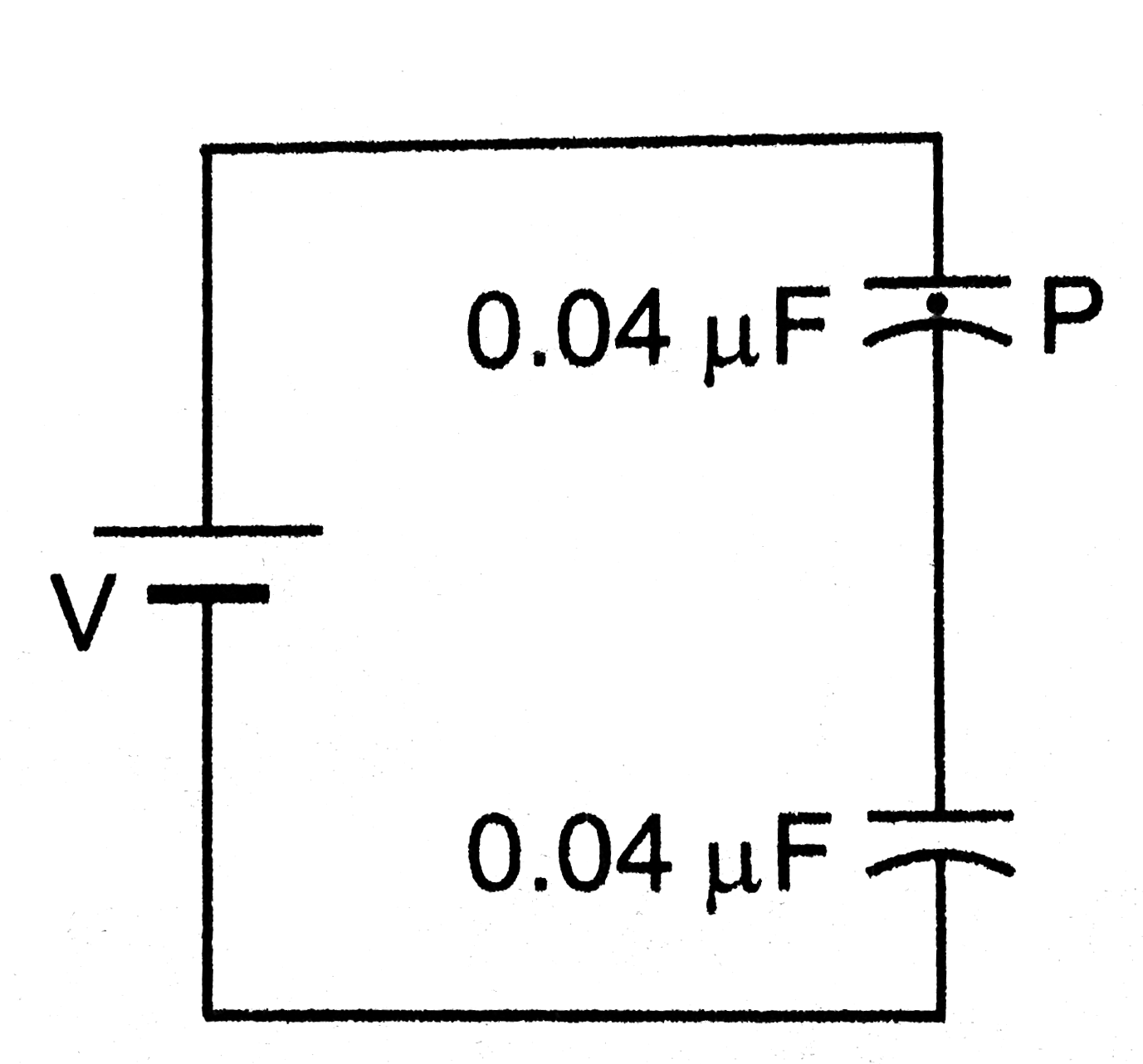
An electron is projected as shown with speed u. If electron just fails to strike the upper plate, find range. (distance from starting point at which electron strike the lower plate again). Consider only electric force.
The correct Answer is:8
ucosθ×t=R .(1)
⏐⏐
⏐
⏐↓a=(qEm)
(u√2)=(qEm)t2⇒t=2μ√2qE .(2)
(u√2)2=2(qEm)dimpliesqEm2=u24d ..(3)
⇒t=2u√2u2(4d)=4√2du
put in (1)
R=(u√2)(4√2du)=4d
Topper's Solved these Questions
- TEST PAPERSBOOK - RESONANCECHAPTER - TEST PAPERSEXERCISE - PT-01
30 Videos
- TEST PAPERSBOOK - RESONANCECHAPTER - TEST PAPERSEXERCISE - Pt-02
30 Videos
- TEST PAPERSBOOK - RESONANCECHAPTER - TEST PAPERSEXERCISE - PART - II PHYSICS
107 Videos
- SIMPLE HARMONIC MOTION BOOK - RESONANCECHAPTER - SIMPLE HARMONIC MOTION EXERCISE - Advanced Level Problems
13 Videos
- TEST SERIESBOOK - RESONANCECHAPTER - TEST SERIESEXERCISE - PHYSICS
127 Videos
Similar Questions
The distance between charged parallel plates is d. An electron -proton is released somewhere in the gap between the plates and it is found that the proton reaches the negative plate at the same time as electron reaches the positive plate. At consider only electric force. The mass of electron is me and mass of proton is mp.The electric field between plates is E.
View SolutionAn electric field E is produced between two parallel plates having a separation d as shown.
(a) With what minimum speed should an electron be projected from the lower plate in the direction of field so that it may reach the upper plate ?
(b) Suppose the electron is projected from the lower plate with the speed calculated in part (a). The direction of projection makes an angle of 60∘with the field. Find the maximum height reached by the electron.
(c ) After how much time , the electron again strikes the lower plate ?
(d) Horizontal distance travelled by the electron in time calculated in part (c).
Charge on electron : e ,mass of electron : m, consider only electric force.
View Solution
Knowledge Check
An electron is projected as shown in fig. with kinetic energy K, at an angle θ=45∘ between two charged plates. Ignore the gravity.

At what distance from the starting point will the electron strike the lower plate?AdB2dC3dD4dAn electron is projected as in fig. at a speed of 6x106ms−1 at an angle of 45∘E=2000Vm−1 directed upward d=3cm and 1=10cm. Will the electron strike either of the plates?
 AUpper plateBLower plateCUpper plate at the edgeDNo where
AUpper plateBLower plateCUpper plate at the edgeDNo whereAn electron is projected as in figure with kinetic energy K, at an angle θ=45∘ between two charged plates. The magnitude of the electric field so that the electron just fails to strike the upper plate, should be greater than:
 AKqdB2KqdCK2qdDiInifinite
AKqdB2KqdCK2qdDiInifinite
An electron (e,m) is projected into a uniform electric field E vertically downward between parallel plates at separation d, with velocity v0. The electron enters the electric field at a point midway between the plates. Find
(a) the magnitude of electric field if electron emerges from the electric field just at the edge of upper plate.
(b) the direction of the velocity of electron as it emerges from the electric field.
(c ) the equation of trajectory followed by electron.
The length of plates is L and consider only electric force.
View SolutionBoth the cacpacitors shown in figure are made ofsquare of edge a The separations between the plates of the capacitors are d_1and d_2as shown in the figure A potential difference V is applied between the point a and b .An electron is projected between the plate s of the upper capacitor along the central line . With what minimum speed should the electron be projected so that it is does not collide with any plate ? consider only the electric forces.

View SolutionAn electric field of magnitude 1000NC−1 is produced between two parallel platees having a separation of 2.0 cm as shown in figure(29.E4) (a) What is the potential difference between the plates? (b) With what minimum speed should an electron be projected from the lower plate in the direction of the field so that it may reach the upper plate? ( c) Suupose the electron is projected from the lower plate with the speed calculated in part (b) . The direction of projection makes an angle of 60∘ with the field. Find the mazimum height reached by the electron.

View SolutionAn electron of kinetic energy K is projected between two charged plats at an angle 60∘ as shown in figure. If electrons doesn't reach to the upper plate just before striking then the magnitude of electric field will be more than:

View SolutionTwo charged metal plates in vacuum are 10cm apart. A uniform electric field of intensity (45/16)×103NC−1 is applied between the plates. An electron is released between the plates from rest at a point just outside the negative plate.
(i) Calculate how long (t) will the electron take to reach the other plate?
(ii) At what velocity (v) will it be electron take to hits the other plate?
View Solution
